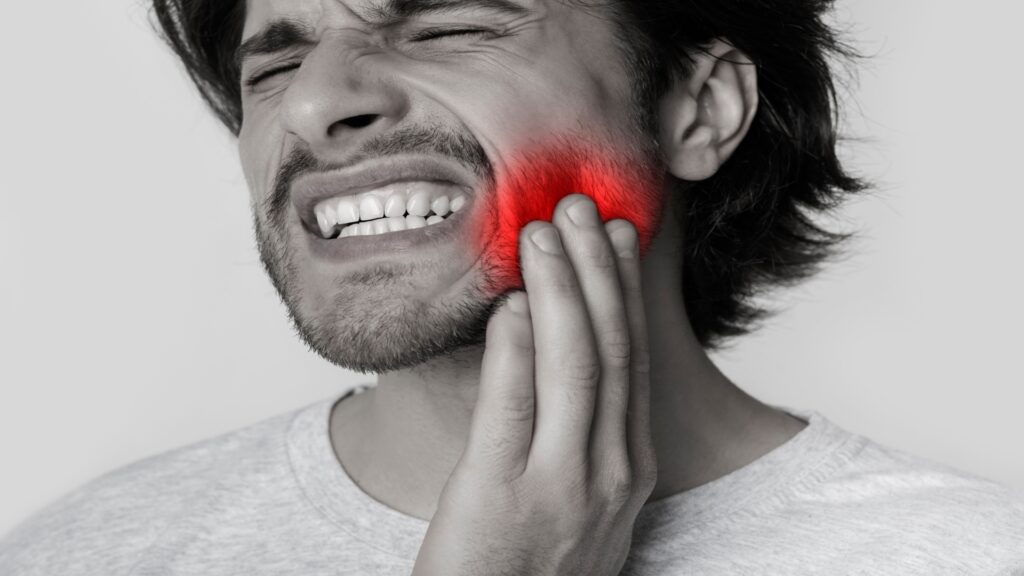Dental emergencies can be challenging, often accompanied by pain and the risk of long-term complications. Immediate and appropriate action is crucial to prevent further damage and ensure a speedy recovery.
Responding appropriately can be a game-changer in preserving oral health and avoiding prolonged discomfort. Fortunately, this article outlines three essential steps to manage a dental emergency effectively.
Step 1: Assess The Situation
Dental emergencies can vary widely, but they generally include situations that require immediate attention to address severe pain, discomfort, or risk to oral health. Here are some common types of dental emergencies:
- Toothache: Severe, persistent tooth pain can indicate a serious issue needing prompt treatment.
- Chipped Or Broken Teeth: These can result from an injury or accident and may involve pain or sharp edges that can cause injury to the mouth.
- Knocked-Out Tooth: This is a critical situation where a tooth has been completely dislodged from its socket.
- Lost Filling Or Crown: If a filling or crown falls out, it can expose sensitive areas of the tooth, leading to pain and further damage.
- Abscess: An abscess is a severe and potentially life-threatening infection that usually appears as a swollen, painful area in the mouth.
- Bleeding Gums: While some gum bleeding can be normal, excessive or uncontrolled bleeding may indicate a more serious issue.
- Broken Orthodontics: Braces or other orthodontic appliances can break and potentially injure the inside of the mouth.
- Swollen Jaw Or Mouth: Swelling can indicate infection, trauma, or other serious conditions.
- Injury To The Soft Tissues Of The Mouth: This includes injuries to the gums, tongue, cheeks, and lips, often involving cuts or lacerations.
- Jaw Pain Or Lockjaw: Severe jaw pain or an inability to open or close the mouth can be related to TMJ disorders, infections, or injuries.
In these situations, seeking immediate dental care from Kenosha Urgent Dental Care and other reputable providers is important.
Step 2: Take Temporary Measures
Taking appropriate temporary measures in dental emergencies can help manage pain and prevent further damage before professional help is available. Here are temporary actions for each type of dental emergency:
- Toothache: Swish your mouth with warm water and carefully use dental floss to dislodge any food particles. It’s important to refrain from applying aspirin directly onto the gums or the tooth.
- Chipped Or Broken Teeth: Rinse the mouth with warm water. If there’s swelling, apply a cold compress outside the mouth or cheek.
- Knocked-Out Tooth: If you have a tooth that has come out, handle it by the top part (the crown) and not by the root. Lightly rinse it without any scrubbing and try to put it back in its place. Should you be unable to do so, keep the tooth moist in either milk or saline solution and quickly go to a dentist.
- Lost Filling Or Crown: For a lost filling, temporarily fill the hole with sugar-free gum or over-the-counter dental cement. If a crown falls off, try to reattach it with dental cement, toothpaste, or denture adhesive.
- Abscess: To alleviate pain and help bring pus to the surface, gently swish your mouth with a mild saline solution several times daily.
- Bleeding Gums: For bleeding gums, a gentle rinse with a mild saline solution can help. If the bleeding is localized, applying light pressure with a clean piece of gauze or cloth can be effective.
- Broken Orthodontics: In case the wires break and start irritating the cheek, tongue, or gum, consider using the eraser side of a pencil to gently nudge the wire to a position that’s less bothersome. If adjusting the wire isn’t possible, apply orthodontic wax or place a small cotton ball over the wire’s end for protection.
- Swollen Jaw Or Mouth: Apply a cold compress to reduce swelling and pain.
- Injury To The Soft Tissues Of The Mouth: Clean the area with warm water. Apply a cold compress to reduce swelling, and use sterile gauze to control bleeding.
- Jaw Pain Or Lockjaw: Apply a warm compress to the area to relieve pain and reduce muscle tightness. Avoid extreme jaw movements.
Remember, contacting a dentist or seeking emergency dental care as soon as possible is important. These temporary measures are not substitutes for professional treatment.
Step 3: Seek Professional Dental Care
In a dental emergency, it is crucial to act swiftly and contact your dentist immediately. Provide a comprehensive description of what has occurred, especially in severe situations such as having a tooth knocked out or experiencing an intense infection.
Once you’ve reached out, heed your dentist’s advice over the phone. While waiting for your appointment, managing any pain and swelling and avoiding activities that might aggravate the issue, like eating hard food, is important. Additionally, if you have any dislodged teeth or fragments, bring them to the appointment.
If your visit is with a new dentist, remember to take your dental records for their reference. Remember that dental emergencies might necessitate multiple visits, making it a good opportunity to discuss preventive measures for the future with your dentist.
Above all, remember that these steps are temporary solutions. Professional diagnosis and treatment from your dentist are vital for addressing the root cause of the emergency and preventing further complications.
Takeaway
Effectively handling dental emergencies involves prompt assessment, immediate temporary care, and seeking professional dental attention without delay. These steps, collectively, are vital in mitigating immediate discomfort and preventing long-term complications, ensuring the preservation of oral health.




















